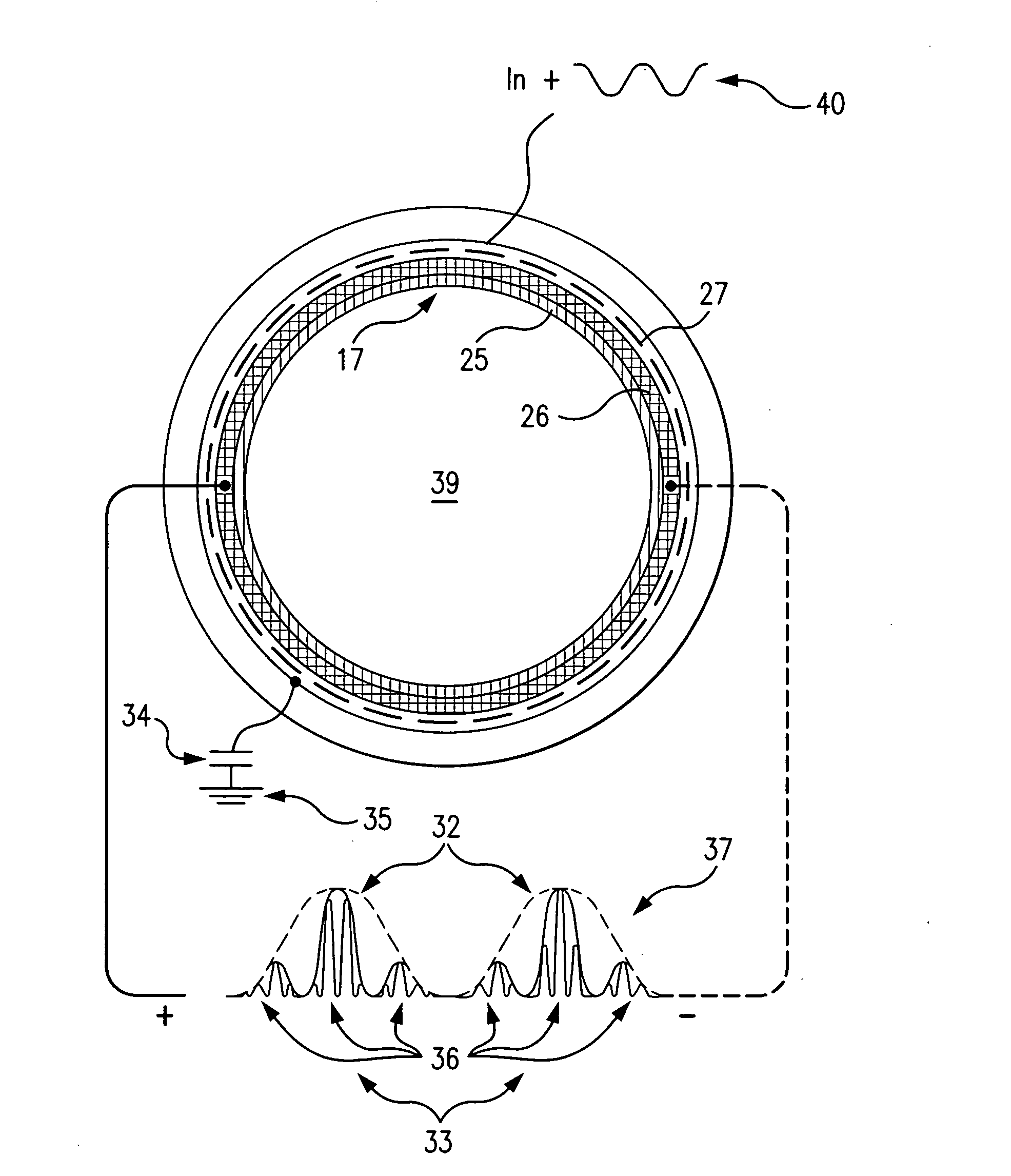Recursive audio modulation system using nested inductor arrays
a nested inductor array and audio modulation technology, applied in the direction of transducer casings/cabinets/supports, audio-frequency transformers/inductances, transducer casings/cabinets/supports, etc., can solve the limitation of digital sound quality due to inherent loss of resolution, inherent “phasing” problem of digital audio, etc., to recapture the depth and immediacy of the original analog recording
- Summary
- Abstract
- Description
- Claims
- Application Information
AI Technical Summary
Benefits of technology
Problems solved by technology
Method used
Image
Examples
Embodiment Construction
[0034]In the preferred embodiment of the present invention 10, the Stage 1 inductor coils 11 are wound around a three-tiered air-cored telescoping mandrel 12, as depicted in FIG. 5A. Since inductance in proportional to the cross-sectional area of the inductor core, the telescoping core structure provides a range of signal frequency responses, with the lower inductance top tier 13 being more responsive to higher frequencies, while the higher inductance base tier 14 responds better at lower frequencies, and the middle tier 15 accommodates mid-range frequencies.
[0035]The inductor windings 16 of the Stage 1 coils 11 preferably comprise composite strips of aluminum and nickel. Being a paramagnetic material, aluminum has a linear B-H curve which tends to attenuate the non-linearity of the B-H curve of nickel near the saturation point and thereby prevent high-end and low-end cutoffs. Optionally, this attenuating effect can be enhanced by inserting paramagnetic disks 38, preferably aluminum...
PUM
| Property | Measurement | Unit |
|---|---|---|
| magnetic permeability | aaaaa | aaaaa |
| time | aaaaa | aaaaa |
| time dimension | aaaaa | aaaaa |
Abstract
Description
Claims
Application Information
 Login to View More
Login to View More - R&D
- Intellectual Property
- Life Sciences
- Materials
- Tech Scout
- Unparalleled Data Quality
- Higher Quality Content
- 60% Fewer Hallucinations
Browse by: Latest US Patents, China's latest patents, Technical Efficacy Thesaurus, Application Domain, Technology Topic, Popular Technical Reports.
© 2025 PatSnap. All rights reserved.Legal|Privacy policy|Modern Slavery Act Transparency Statement|Sitemap|About US| Contact US: help@patsnap.com



